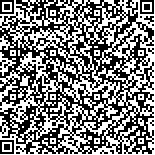| 引用本文: |
徐海玉,刘黎明,宣天惠,等.真实世界数据的中医优势病种中药参与率及费用研究*[J].中国卫生经济,2023,42(8):54-59,65.[点击复制] |
Xu Haiyu,Liu Liming,Xuan Tianhui,et al.Study on Participation Rate and Cost of Dominant Traditional Chinese Medicine Diseases with Real World Data[J].CHINESE HEALTH ECONOMICS,2023,42(8):54-59,65.[点击复制] |
|
| |
|
|
| 本文已被:浏览 756次 下载 686次 |

码上扫一扫! |
| 真实世界数据的中医优势病种中药参与率及费用研究* |
| 徐海玉,刘黎明,宣天惠,李诗麒,满晓玮,蒋艳,赵丽颖,曹桑蔚,周奕汝,王志新,程薇 |
|
|
| (北京中医药大学 北京 100029;深圳北京中医药大学研究院 广东 深圳 518118) |
|
| 摘要: |
| 目的:旨在探讨影响中医优势病种中药参与率及费用的相关因素,以期为更好发挥中医药优势提供参考。方法: 数据选取自2019年1月1日—12月31日北京市55家医院优势病种住院患者的信息。采用倾向性得分匹配法对提取的住院患者基本数据进行混杂消除,并运用χ2 检验、logistic回归及贝叶斯网络模型统计方法分析中药参与率差异、影响因素以及影响程度。结果:共收集219 375例优势病种住院患者数据,其中有效例数193 810例。男性占比 (54.10%) 优于女性,41~80岁占比 (61.27%) 最高,患者以城镇职工基本医疗保险支付为主 (45.22%),三级医院相较二级医院占比更高,住院0~7天患者占比 (43.17%) 最高;与不参与时相比,优势病种患者在有中成药参与时费用更高,有中药饮片参与时二级医院费用更低,三级医院更高;医院级别、类别、居住地、年龄、支付方式及住院日在 4 种中药参与率情况相比,差异具有统计学意义 (P< 0.05);其中,医院类别、年龄和住院日是中药参与率的共同影响因素 (P<0.05)。结论:优势病种中成药参与率及价格均高于饮片,两者占比不均衡,建议健全中医定价和补偿激励机制,并积极探索中医药特色诊疗技术,以提高中药使用率,并发挥其在中医优势病种治疗中的优势作用。 |
| 关键词: 中医优势病种 住院患者 中药参与率 费用 |
| DOI: |
| 投稿时间:2023-05-15 |
| 基金项目:国家中医药管理局中医药总费用核算及政策分析项目 (GZY-GCS-2019-026) |
|
| Study on Participation Rate and Cost of Dominant Traditional Chinese Medicine Diseases with Real World Data |
| Xu Haiyu,Liu Liming,Xuan Tianhui,Li Shiqi,Man Xiaowei,Jiang Yan,Zhao Liying,Cao Sangwei,Zhou Yiru,Wang Zhixin,Cheng Wei |
| (Beijing University of Chinese Medicine, Beijing, 100029 , China) |
| Abstract: |
| Objective: To explore the relevant factors that affect the participation rate and cost of traditional Chinese medicine (TCM) for dominant diseases of TCM, in order to provide references for giving better play to the advantages of TCM. Methods: The da- ta is selected from the information of inpatients with dominant diseases in 55 hospitals in Beijing from January 1 to December 31, 2019. Using the propensity score matching method, the extracted basic data of inpatients was mixed and eliminated, and the statistical methods of χ2 test, logistic regression and Bayesian network model were used to analyze the differences in the participation rate of TCM, influencing factors, and the degree of influence. Results: A total of 219 375 inpatients with dominant diseases were collected, of which 193 810 cases were effective. The proportion of male (54.10%) is higher than that of female. The proportion of patients aged 41 to 80 (61.27%) is the highest. The patients mainly pay for basic medical insurance for urban workers (45.22%). The proportion of pa- tients in tertiary hospitals is higher than that in secondary hospitals. The proportion of patients in 0-7 days is the highest (43.17%). Compared with non-participation, the cost of patients with dominant diseases is higher when traditional Chinese patent medicines and simple preparations is involved, the cost of secondary hospitals is lower when Chinese herbal pieces are involved, and the cost of tertia- ry hospitals is higher. The type, residence, age, payment method and length of stay of the hospital were significantly different in the par- ticipation rate of the four traditional Chinese medicines (P<0.05). Among them, hospital level, type, age and hospitalization days are the common influencing factors of the participation rate of traditional Chinese medicine (P<0.05). Conclusion: The participation rate and price of proprietary Chinese medicines for advantageous diseases are higher than those of decoction pieces, and their proportion are unbalanced. It is recommended to improve the pricing and compensation incentive mechanism of TCM, and actively explore the characteristic diagnosis and treatment technology of TCM, so as to improve the utilization rate of TCM, and play its dominant role in the treatment of dominant diseases in TCM. |
| Key words: dominant traditional diseases inpatients herbal medicine participation rate cost |
|
|
|
|
|